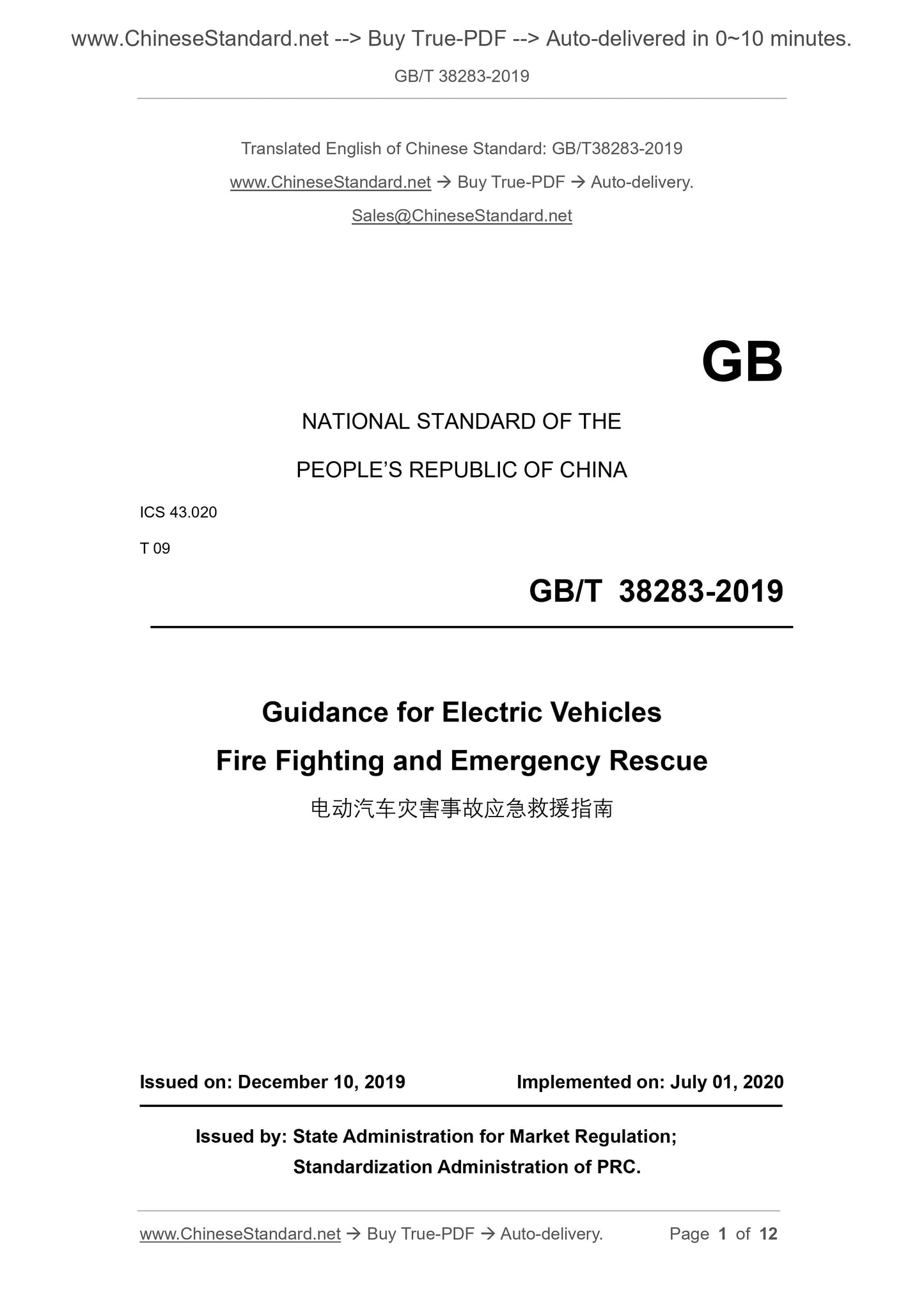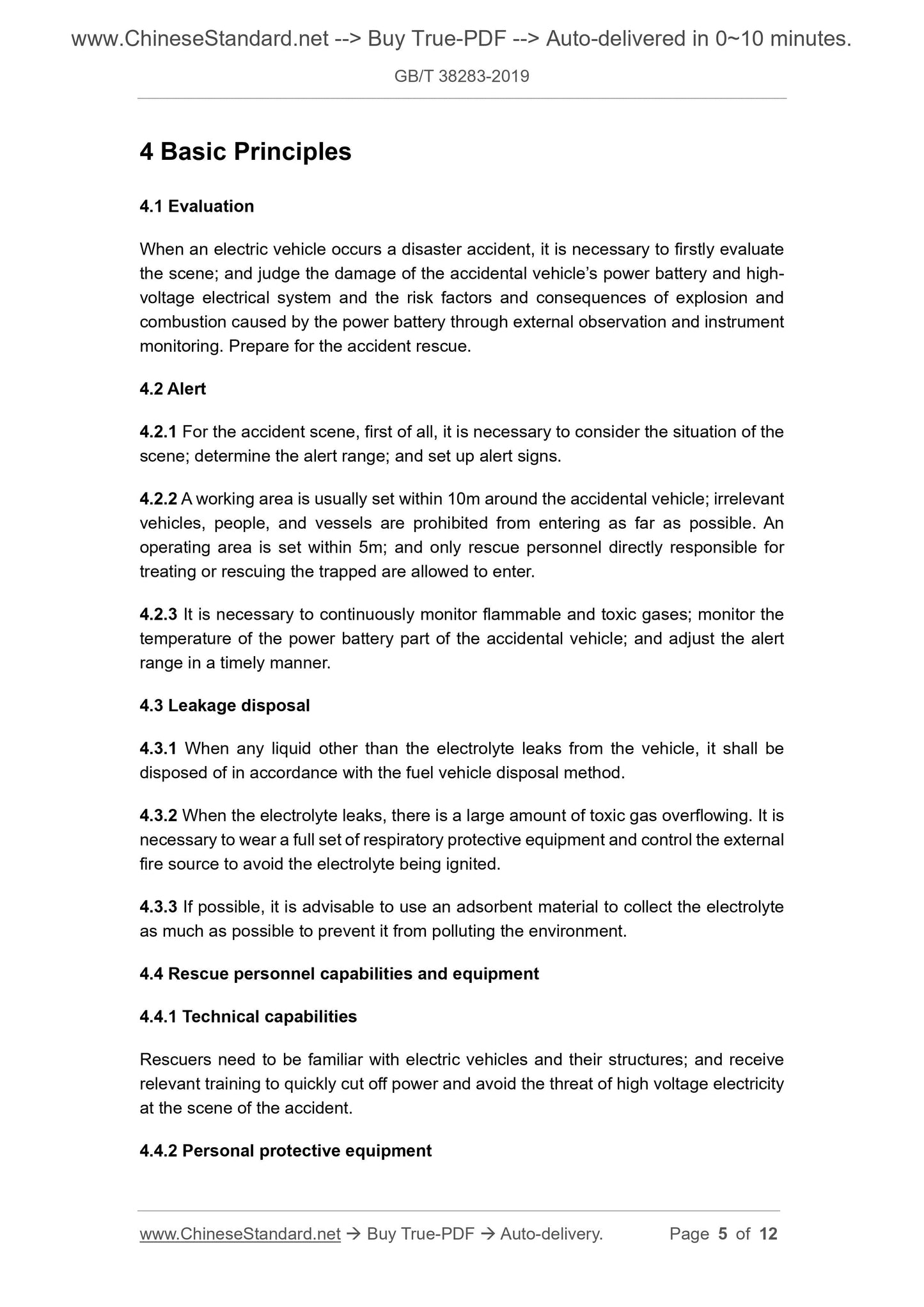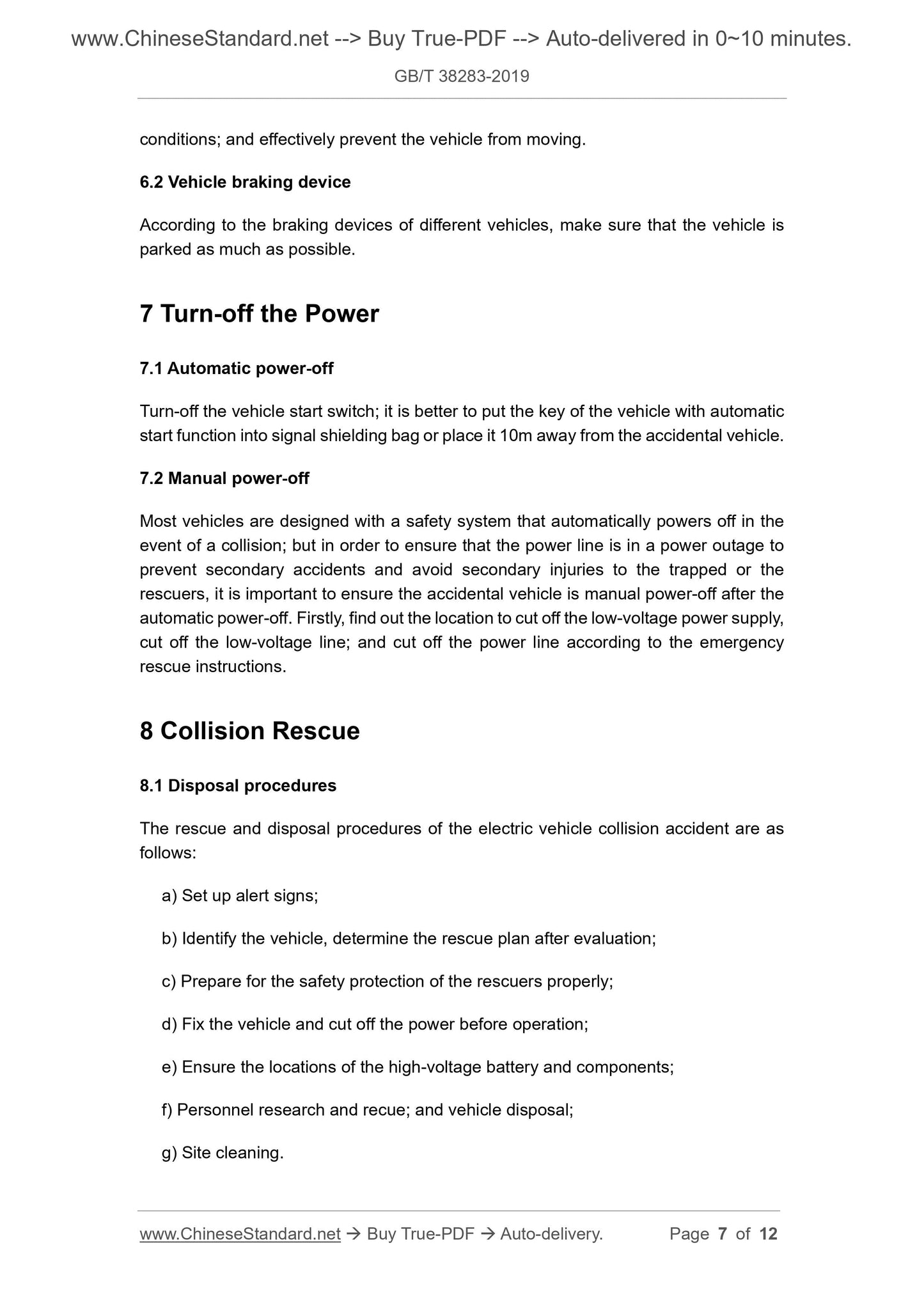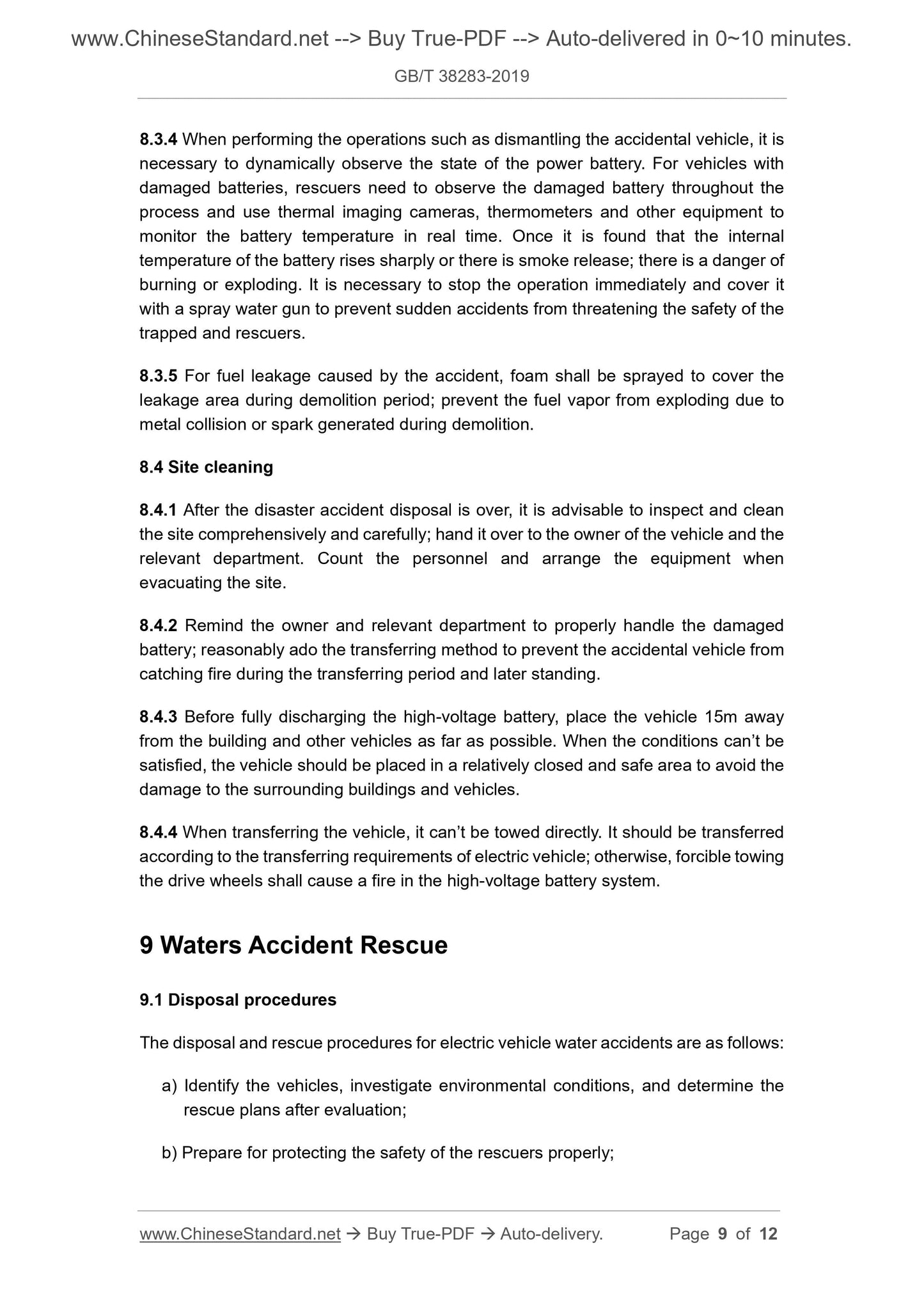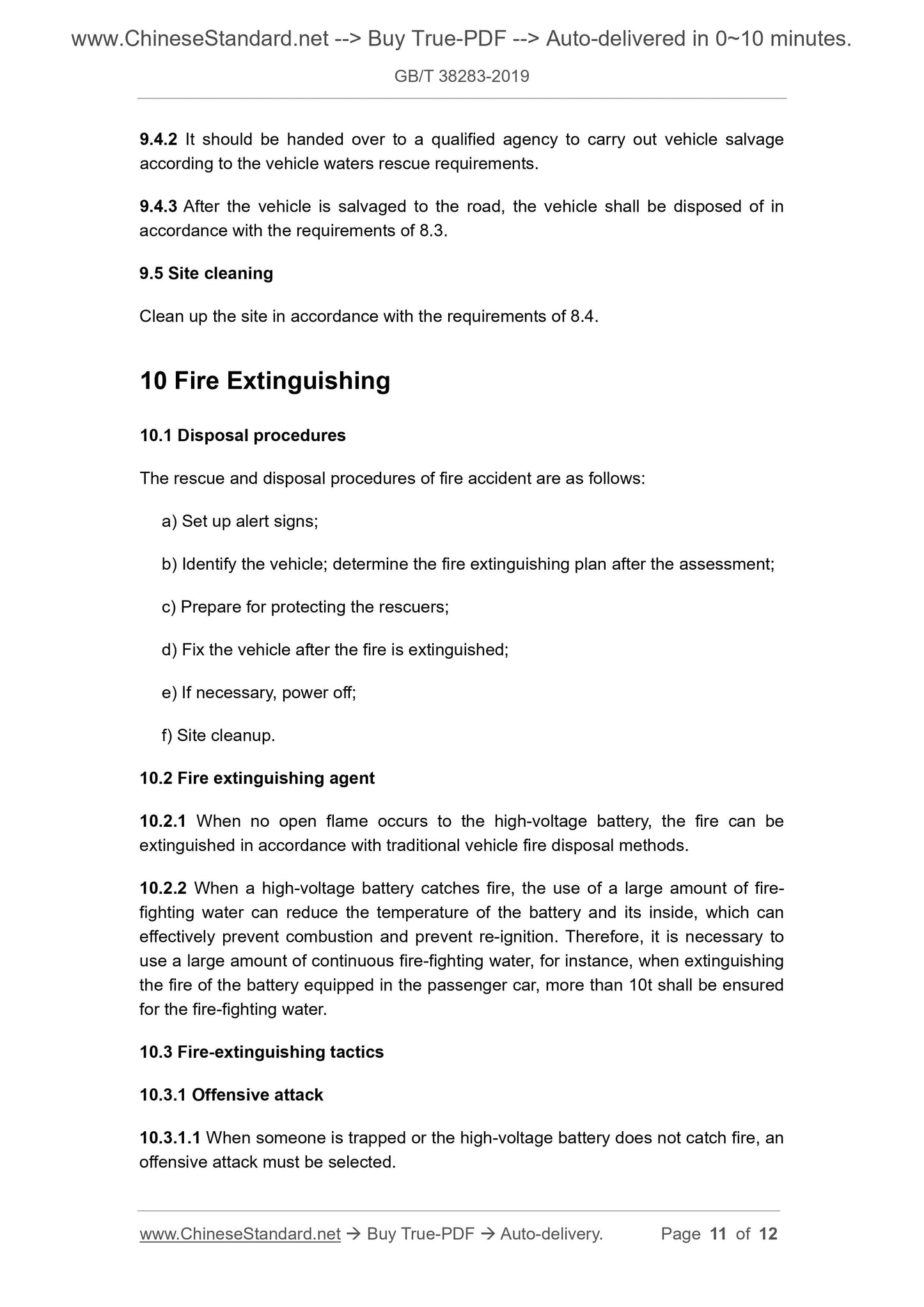1
/
of
6
www.ChineseStandard.us -- Field Test Asia Pte. Ltd.
GB/T 38283-2019 English PDF (GB/T38283-2019)
GB/T 38283-2019 English PDF (GB/T38283-2019)
Regular price
$150.00
Regular price
Sale price
$150.00
Unit price
/
per
Shipping calculated at checkout.
Couldn't load pickup availability
GB/T 38283-2019: Guidance for Electric Vehicles Fire Fighting and Emergency Rescue
Delivery: 9 seconds. Download (and Email) true-PDF + Invoice.Get Quotation: Click GB/T 38283-2019 (Self-service in 1-minute)
Newer / historical versions: GB/T 38283-2019
Preview True-PDF
Scope
This Standard gives guidance on the fire fighting and emergency rescue in the eventof a fire, collision, or water bubble for an electric vehicle.
This Standard is applicable to the full-time rescue personnel for emergency rescue
against the pure electric vehicles and hybrid electric vehicles.
This Standard is inapplicable to the emergency rescue of the fuel cell electric vehicles.
Basic Data
| Standard ID | GB/T 38283-2019 (GB/T38283-2019) |
| Description (Translated English) | Guidance for Electric Vehicles Fire Fighting and Emergency Rescue |
| Sector / Industry | National Standard (Recommended) |
| Classification of Chinese Standard | T09 |
| Classification of International Standard | 43.020 |
| Word Count Estimation | 10,152 |
| Date of Issue | 2019-12-10 |
| Date of Implementation | 2020-07-01 |
| Issuing agency(ies) | State Administration for Market Regulation, China National Standardization Administration |
Share
